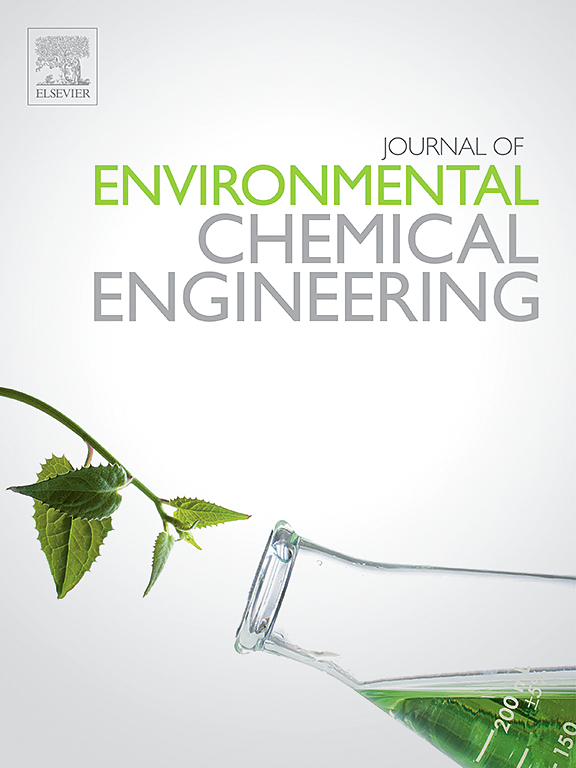纳米技术驱动的生物识别元件和无标记农药传感
IF 7.4
2区 工程技术
Q1 ENGINEERING, CHEMICAL
引用次数: 0
摘要
农药检测对于确保食品安全和环境保护至关重要。传统的检测方法通常依赖于生物识别元素和标签,这些元素和标签在恶劣的环境中可能不稳定、耗时、昂贵,并且增加了检测的复杂性。本综述首先简要介绍了这些检测方法及其缺点。随后,该综述介绍了利用纳米粒子快速、灵敏地检测农药的新型、无生物识别元素和无标记传感器。纳米颗粒被集成到一个传感器平台中,该平台通过基于聚集的比色、表面等离子体共振(SPR)、表面增强拉曼光谱(SERS)电化学或其他检测机制进行操作。这些传感器依赖于纳米颗粒独特的光学、电子和催化特性,这些特性在农药分子的作用下会发生可测量的变化。这些变化受到实时监测,提供了农药浓度与传感器反应之间的直接相关性,而无需复杂的生物识别元件或标签。最后,从作者的角度讨论了无生物识别元素和无标签传感器的优势、局限性、潜力和挑战。本文章由计算机程序翻译,如有差异,请以英文原文为准。
Nanotechnology driven biorecognition element and label free sensing of pesticides
Pesticide detection is crucial for ensuring food safety and environmental protection. Traditional methods of detection often rely on biorecognition elements and labels, which can be unstable in harsh environment, time-consuming, expensive and adds complexity to the assay. The review starts out by giving a quick synopsis of these assays and their shortcomings. The review subsequently builds upon novel, biorecognition element free, and label free sensors leveraging nanoparticles for the rapid and sensitive detection of pesticides. Nanoparticles are integrated into a sensor platform that operates through aggregation based colorimetric, surface plasmon resonance (SPR), surface enhanced Raman spectroscopy (SERS) electrochemical or other detection mechanisms. These sensors rely upon the unique optical, electronic and catalytic properties of nanoparticles, which undergo measurable changes in response to pesticide molecules. These changes are monitored in real-time, providing a direct correlation between pesticide concentration and sensor response without the need for complex biorecognition elements or labels. Finally, the advantages, limitations, potential and challenges of biorecognition element free, and label free sensors are discussed through authors perspective.
求助全文
通过发布文献求助,成功后即可免费获取论文全文。
去求助
来源期刊

Journal of Environmental Chemical Engineering
Environmental Science-Pollution
CiteScore
11.40
自引率
6.50%
发文量
2017
审稿时长
27 days
期刊介绍:
The Journal of Environmental Chemical Engineering (JECE) serves as a platform for the dissemination of original and innovative research focusing on the advancement of environmentally-friendly, sustainable technologies. JECE emphasizes the transition towards a carbon-neutral circular economy and a self-sufficient bio-based economy. Topics covered include soil, water, wastewater, and air decontamination; pollution monitoring, prevention, and control; advanced analytics, sensors, impact and risk assessment methodologies in environmental chemical engineering; resource recovery (water, nutrients, materials, energy); industrial ecology; valorization of waste streams; waste management (including e-waste); climate-water-energy-food nexus; novel materials for environmental, chemical, and energy applications; sustainability and environmental safety; water digitalization, water data science, and machine learning; process integration and intensification; recent developments in green chemistry for synthesis, catalysis, and energy; and original research on contaminants of emerging concern, persistent chemicals, and priority substances, including microplastics, nanoplastics, nanomaterials, micropollutants, antimicrobial resistance genes, and emerging pathogens (viruses, bacteria, parasites) of environmental significance.
 求助内容:
求助内容: 应助结果提醒方式:
应助结果提醒方式:


